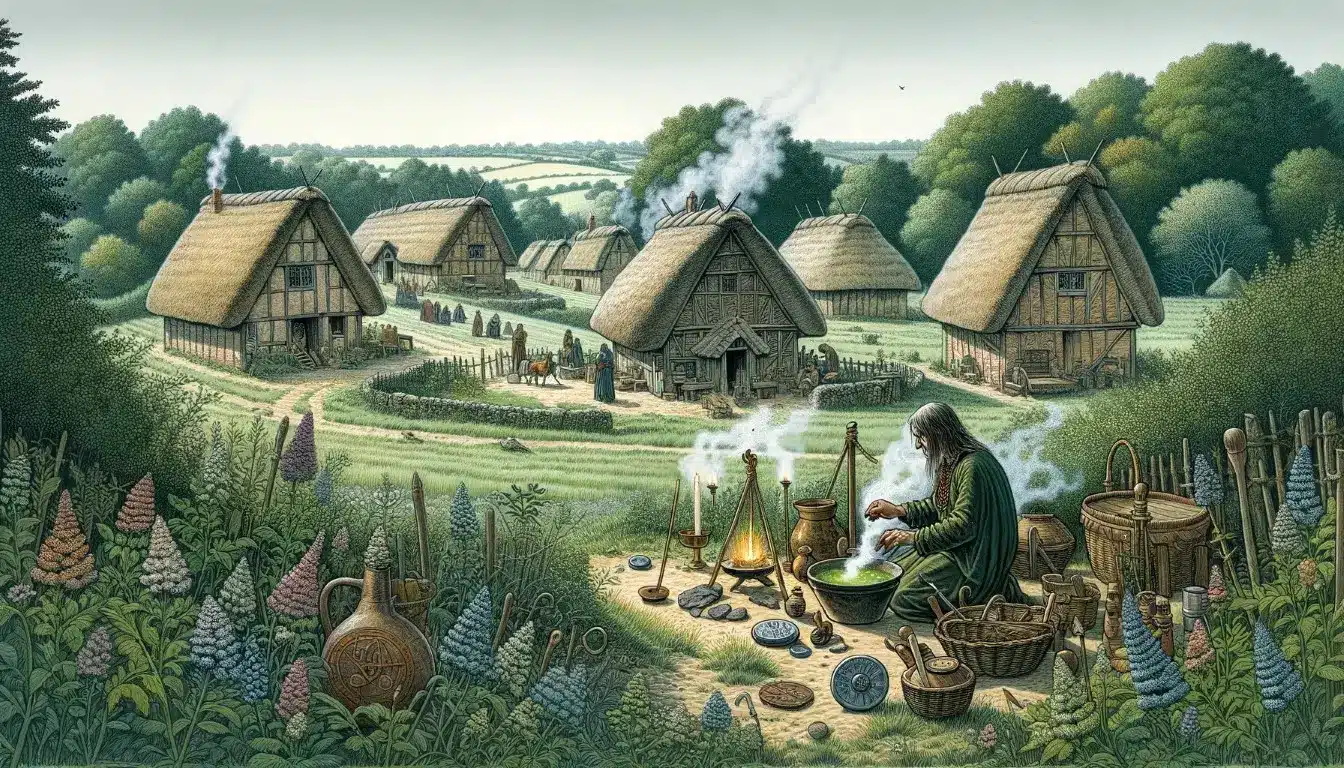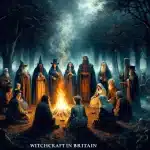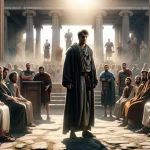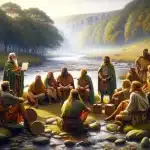Last Updated on 17/02/2024 by Alex Hamlyn
Table of Contents
The Anglo-Saxons, who inhabited and ruled parts of Britain from the 5th century until the Norman Conquest in 1066, had their own beliefs and practices regarding witchcraft and magic. However, understanding their views requires interpreting limited historical records, as much of what is known of witches in Saxon Britain comes from texts written after the Christianization of the Anglo-Saxons.
However, understanding their views requires interpreting limited historical records, as much of what is known comes from texts written after the Christianization of the Anglo-Saxons. The challenge in understanding Anglo-Saxon witchcraft and magic lies in the scarcity and nature of the sources. Much of the knowledge comes from post-Christianization records, which can be biased due to the Christian perspective of the scribes. This means that the practices and beliefs are often interpreted through a Christian lens, potentially distorting the original pagan practices.
Before their conversion to Christianity, the Anglo-Saxons shared with other Germanic tribes a polytheistic religion rich in myths, deities, and supernatural beliefs. This included a belief in spirits, elves, and other supernatural entities that could influence their lives.
The term ‘witchcraft’ is a modern interpretation of various practices that were part of their culture. This included not only what we might call magical practices, such as charms and divination, but also healing, protection spells, and possibly curses. These were often linked to their religious beliefs and rituals.
Understanding Anglo-Saxon witchcraft and magic requires placing these practices within the broader context of their culture and daily life. Magic and religion were not separate categories but intertwined in their worldview, influencing everything from medicine to agriculture.
The Anglo-Saxon beliefs and practices evolved over time, especially with the spread of Christianity. The conversion process itself was gradual and complex, leading to a syncretism where Christian and pagan elements coexisted and influenced each other.
Laws Against Witches in Saxon Britain and Pagan Practices
With the spread of Christianity among the Anglo-Saxons from the 7th century onwards, there was a gradual shift in how these practices were viewed. The Christian Church was often opposed to any form of pagan practices, which they saw as superstition or heresy. Over time, what might have been viewed as benign or neutral in a pagan context began to be seen as evil or diabolical under Christian influence.
The earliest Anglo-Saxon laws, including those of King Ælfred the Great, do not specifically mention witchcraft. However, they do condemn pagan practices. Later laws, influenced by Christian thought, began to specifically target practices considered to be witchcraft or sorcery. Christianity’s spread fundamentally altered the Anglo-Saxons’ worldview, including their perception of previously accepted pagan practices. What was once perhaps seen as a natural part of their spirituality and daily life began to be viewed through the lens of Christian morality and doctrine, which often classified these practices as heretical or diabolical.
The Christian Church’s stance against pagan practices was not merely a theological disagreement. It was also an effort to consolidate Christian faith and authority. This opposition was part of a broader strategy to convert pagan populations and integrate them into a Christian moral and social order. Pagan practices, including those related to folk magic, divination, and worship of old gods, were seen as direct challenges to this authority.
The evolution of Anglo-Saxon law under Christian influence is evidence of the changing social attitudes towards pagan practices. Initially, these laws might not have explicitly mentioned witchcraft – possibly reflecting a period of transition and tolerance – but over time, Christian influence on moral and legal norms solidified, and laws began to more specifically target and condemn practices associated with witchcraft and sorcery. This change reflected the growing institutional power of the Church and its influence on secular governance.
Despite the official opposition, it’s important to remember that the Christianisation of the Saxon world was a gradual process. There was a period of overlap where Christian and pagan beliefs coexisted, and influenced each other. This is evident in some of the surviving charms and spells that blend Christian prayers with traditional pagan motifs.
Healing and Cunning Folk
In Anglo-Saxon society, there were individuals known as ‘cunning folk,’ who were practitioners of folk medicine and magic. They were often sought for healing, protection against evil forces, or interpreting omens. The line between accepted folk practices and condemned witchcraft was not always clear and could shift depending on the prevailing religious and social attitudes.
We also have insights into Anglo-Saxon views on witchcraft and magic from literary sources such as “Beowulf” and various Anglo-Saxon poems, which contain references to spells, omens, and monsters. While literary sources like these provide insights into the cultural perception of magic and the supernatural, we can gain valuable insight by comparing these fictional narratives with respected legal texts from the period. Together, they offer a holistic perspective on how these practices coexisted in the conflict between legal decrees and social belief.
The transition from paganism to Christianity in Anglo-Saxon England was a gradual process, where pagan and Christian beliefs coexisted and influenced each other. This transitional period saw a gradual redefining of pre-Christian spiritual practices as ‘witchcraft’ in the negative sense that became more common in the later medieval period.
Initially rooted in pagan traditions and beliefs, these practices underwent a transformation in perception, increasingly seen through the lens of Christian morality and doctrine. By the time of the Viking and Norman Conquests, the groundwork had been laid for the later medieval conception of witchcraft as a malevolent, anti-Christian practice.
Read more in this series
Witchcraft in Britain
An Introduction
Witches in Roman Britain
(1st-5th century)
Viking Britain and Witchcraft
(8th-11th century)
Medieval Britain and Witchcraft
(5th century onward)
Plantagenet and High Medieval Britain (12th-15th century)
17th Century: The Peak of Witch Hunts in Britain
Modern Britain And Witchcraft – As Strange As Ever
Witchcraft and the Celts
(Pre – AD43)
Witches in Saxon Britain
(5th-11th century)
Norman Britain and Witchcraft
(11th-12th century)
Early Modern Period and Restoration (15th-18th century)
Victorian Britain and Witchcraft
(19th-20th century)
Famous Witches in British History
(Plus one Witch Hunter)



